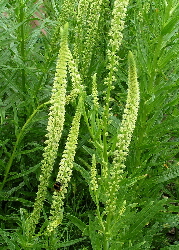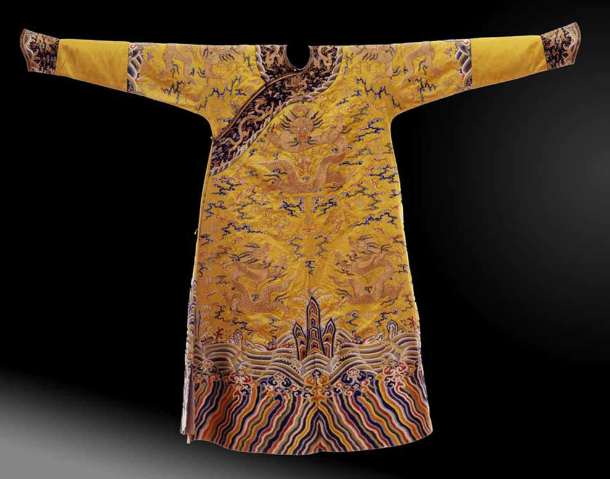Difference between revisions of "PEM E80968 Dragon robe, China (19th century)"
Jump to navigation
Jump to search

| Line 8: | Line 8: | ||
== Summary of results == | == Summary of results == | ||
| + | |||
| + | [[File:Weld.jpg|thumb|'''weld/ picture from http://wildcolours.co.uk/html/weld.html]] | ||
Yellow thread from the collar seam was samples and analyzed. The major components of the plant are flavonoids: rutin, keampferol and quecetin glycosides. The dyeing source was probably [http://cameo.mfa.org/wiki/Pagoda_tree_(Styphnolobium_japonicum)_LC pagoda tree buds]. [1] | Yellow thread from the collar seam was samples and analyzed. The major components of the plant are flavonoids: rutin, keampferol and quecetin glycosides. The dyeing source was probably [http://cameo.mfa.org/wiki/Pagoda_tree_(Styphnolobium_japonicum)_LC pagoda tree buds]. [1] | ||
Revision as of 12:18, 7 August 2017
Artifact Information
The Peabody Essex Museum in Salem, MA USA. E80968.
Summary of results

weld/ picture from http://wildcolours.co.uk/html/weld.html
Yellow thread from the collar seam was samples and analyzed. The major components of the plant are flavonoids: rutin, keampferol and quecetin glycosides. The dyeing source was probably pagoda tree buds. [1]
HPLC profile
References
[1] Xian Zhang,Karina Corrigan, Bruce MacLaren, Mimi Leveque, and Richard A. Laursen, Characterization of Yellow Dyes in Nineteenth Century Chinese Textiles. Studies in Conservation 52, 211-220 (2007).
